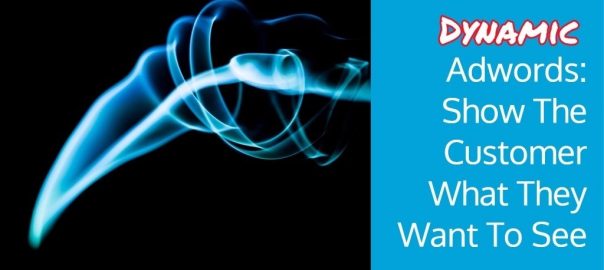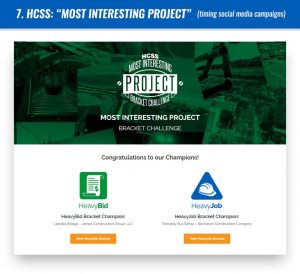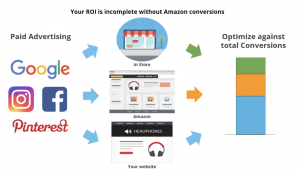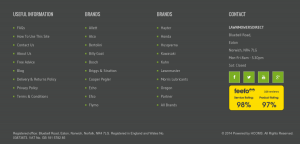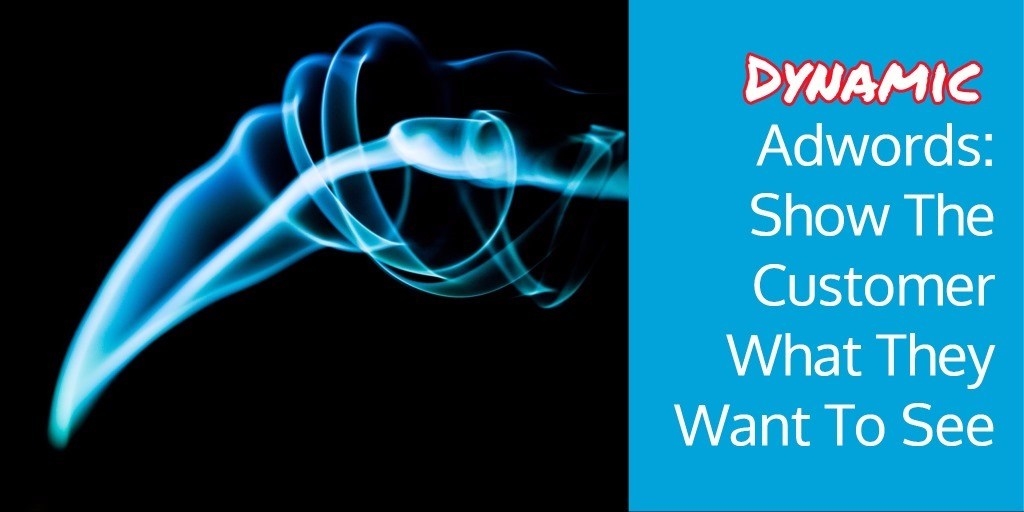
“Give the customer what they want” is a tried and tested method for getting customer engagement and more sales.
But what if your customers want something extremely specific?
How can you make sure that what you’re showing them is exactly what they want to see?
Imagine a situation where you could show your customer what they are interested in at the same time as they’re thinking about it.
Don’t you think that would be a valuable tool to have in your sales armory?
Well, with a little bit of effort, you can recreate this scenario for yourself using Adwords and a bit of programming.
Dynamic Keywords & Landing Pages
Step One – Use Dynamic Keyword Insertion (DKI)
AdWords allows you to identify what your customer is looking for, through the search keywords they use when they perform their search.
And DKI enables your AdWords ad to include the specific search phrase your potential customer has used in their Google search.
So for example, a customer might use Google to search for:
Honda Odyssey
If you’re a Honda dealer, you’ll want to be able to capitalize on this search by featuring this phrase in your AdWords ad.
If the customer has a more specific search, such as:
red Honda Odyssey
you can use DKI to include the word “red” within the ad copy, as well as “Honda Odyssey”.
The use of DKI makes this process easier than having to set up hundreds of variations of the ad itself, which specifically target eg only red keywords, blue keywords etc.
This gives you a greater chance of the customer clicking the ad, as their exact search phrase has been matched in the copy of your ad.
What makes it even more interesting is when we get to the level of a customer who is using a very specific search phrase, indicating they’ve already done some research and are probably on the point of buying.
This type of search might include a specific phrase such as:
red Honda Odyssey tan seats
Sure, they might click on your competitor’s generic ad that simply says they are a Honda Dealer, but they’re far more likely to click your ad if it has a headline that says:
Red Honda Odyssey Tan Seats – Available to Drive Away Now
So to recap, using Google’s DKI functionality within your AdWords campaigns, you can ensure your ad matches the exact phrase your potential customer is searching for.
OK, but how does that help when it comes to landing pages?
Step Two – Landing Page Variations
A laborious and unwieldy method of matching what your customer has told you they want (by their search phrase), would be to set up a separate page for each individual color combination for the vehicle in question.
So you’d have a page for:
- Red Honda Odyssey with Tan Seats
- Blue Honda Odyssey with Tan Seats
- White Honda Odyssey with Tan Seats
- etc
Your AdWords would then be set up to click through to one of hundreds of different landing page combinations, with each ad copy variant only being shown when that specific set of keywords is searched for.
However, with DKI and Dynamic Landing Pages, we can automate the whole process.
Step Three – Dynamic Landing Pages (Dynamic Text)
Using a process called Dynamic Text Insertion, we can mirror the keywords that were used in the original search, within the headlines and body copy of our landing pages.
The process requires some alteration to the parameters you use within your AdWords setup.
Plus you’ll need to develop some specialist code to add to your site’s pages – or use a third party landing page development tool, such as Unbounce or Instapage, to handle this Dynamic process for you.
Once you’ve set things up dynamically, you can create a landing page that, when the customer searches for red Honda Odyssey tan seats, the page they click through to mirrors that specific search phrase within the copy on the page itself.
So, continuing our previous example, the customer searches for ‘red Honda Odyssey tan seats’. Then clicks an ad that says ‘red Honda Odyssey tan seats’. Then arrives at the landing page where he sees that exact same phrase.
Certainly that makes for a better user experience and is more likely to keep them engaged with the content on the page.
You may have a “design your own car” feature, so by including this on your landing page, your customer can put their car together exactly the way they want it. They can then submit directly into your order management system.
You can see how the process outlined above will be a fantastic aid to getting customers to stick with you once they land on your site.
But you could actually take things even further than this, if you have the development expertise on hand to provide a more sophisticated solution.
Step Four – Dynamic Landing Pages (Dynamic Images)
You could have your developers set up a system where the keywords that have been searched for trigger the showing of a specific page that uses those keywords for showing the images. (Though you’d have to be careful with your definitions here, as someone might be looking for red seats, rather than a red Honda).
Or you could get some additional dynamic code created that pre-populates your “design your own car” feature, in order to show the image of the Honda Odyssey in red, with tan seats, when your potential customer lands on the page.
There is obviously quite a bit of code development required for this extra step, so it may prove to be out of the reach of the average dealership.
But pretty much any dealer should be able to utilise these dynamic capabilities in one of the ways outlined above, aiming to capture a potential customer who:
- Performs a search for a specific car.
- Sees an advert that includes the very words they used in their search.
- Clicks through to a landing page that features text (and possibly images) that relates to the exact car they were looking for.
Wouldn’t that be a great experience to be able to offer to your potential customers?
* Adapted lead image: Public Domain, pixabay.com via getstencil.com
The post Dynamic Adwords: Show The Customer What They Want To See appeared first on Search Engine People Blog.
(76)
